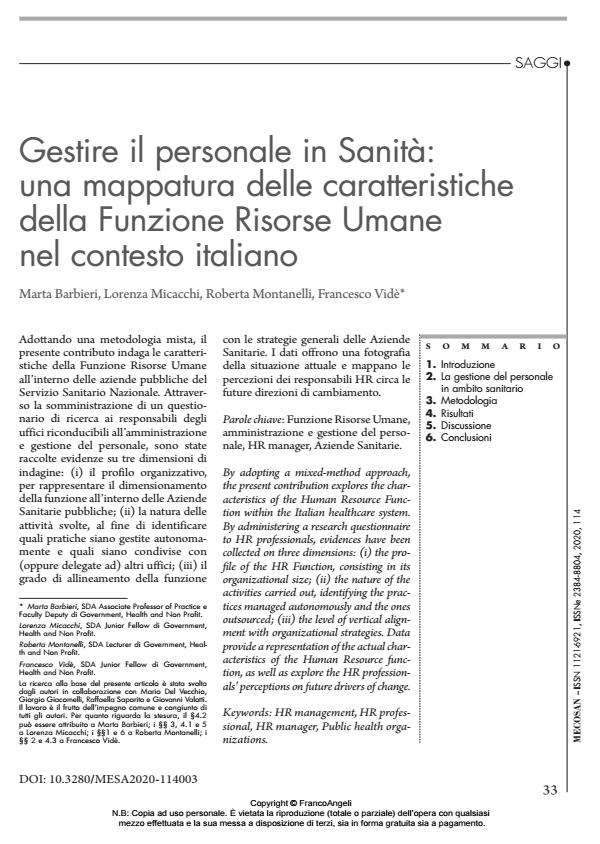Gestire il personale in Sanità: una mappatura delle caratteristiche della Funzione Risorse Umane nel contesto italiano
Titolo Rivista MECOSAN
Autori/Curatori Marta Barbieri, Lorenza Micacchi, Roberta Montanelli, Francesco Vidè
Anno di pubblicazione 2020 Fascicolo 2020/114
Lingua Italiano Numero pagine 33 P. 33-65 Dimensione file 530 KB
DOI 10.3280/MESA2020-114003
Il DOI è il codice a barre della proprietà intellettuale: per saperne di più
clicca qui
Qui sotto puoi vedere in anteprima la prima pagina di questo articolo.
Se questo articolo ti interessa, lo puoi acquistare (e scaricare in formato pdf) seguendo le facili indicazioni per acquistare il download credit. Acquista Download Credits per scaricare questo Articolo in formato PDF

FrancoAngeli è membro della Publishers International Linking Association, Inc (PILA)associazione indipendente e non profit per facilitare (attraverso i servizi tecnologici implementati da CrossRef.org) l’accesso degli studiosi ai contenuti digitali nelle pubblicazioni professionali e scientifiche
- Metodologie per la determinazione del fabbisogno di personale nel management della sanità: una revisione della letteratura internazionale Luca Pirrotta, Alessandra Da Ros, Paola Cantarelli, Nicola Bellé, in MECOSAN 126/2024 pp.123
DOI: 10.3280/mesa2023-126oa17289
Marta Barbieri, Lorenza Micacchi, Roberta Montanelli, Francesco Vidè, Gestire il personale in Sanità: una mappatura delle caratteristiche della Funzione Risorse Umane nel contesto italiano in "MECOSAN" 114/2020, pp 33-65, DOI: 10.3280/MESA2020-114003